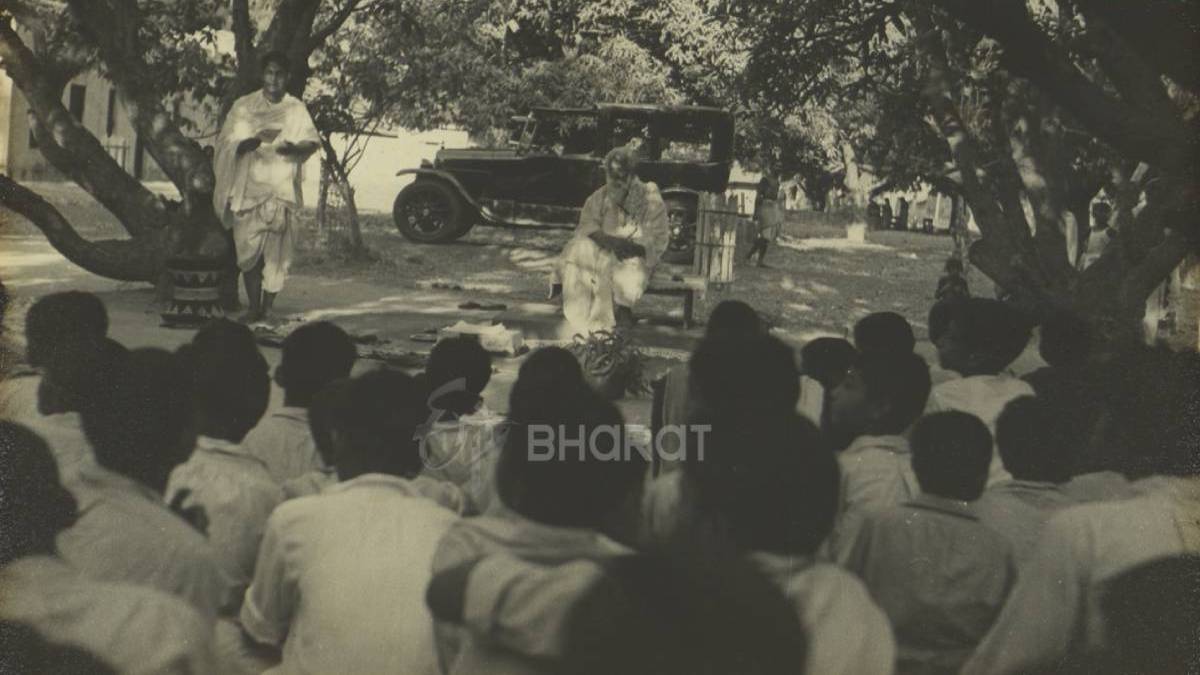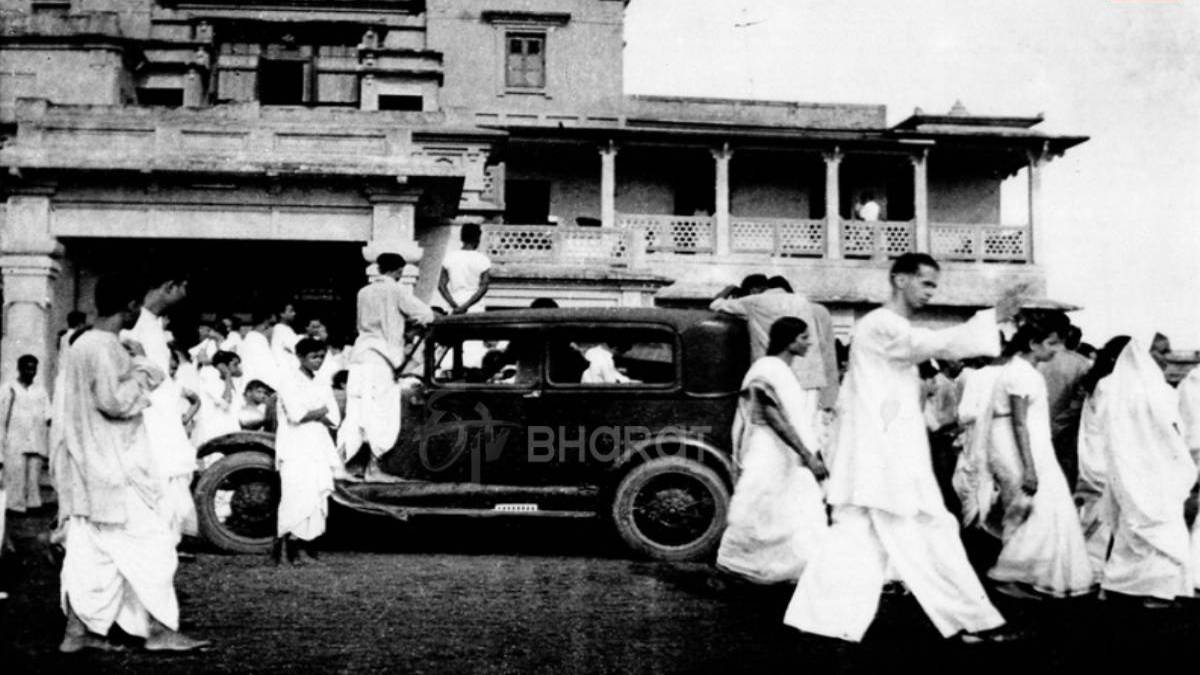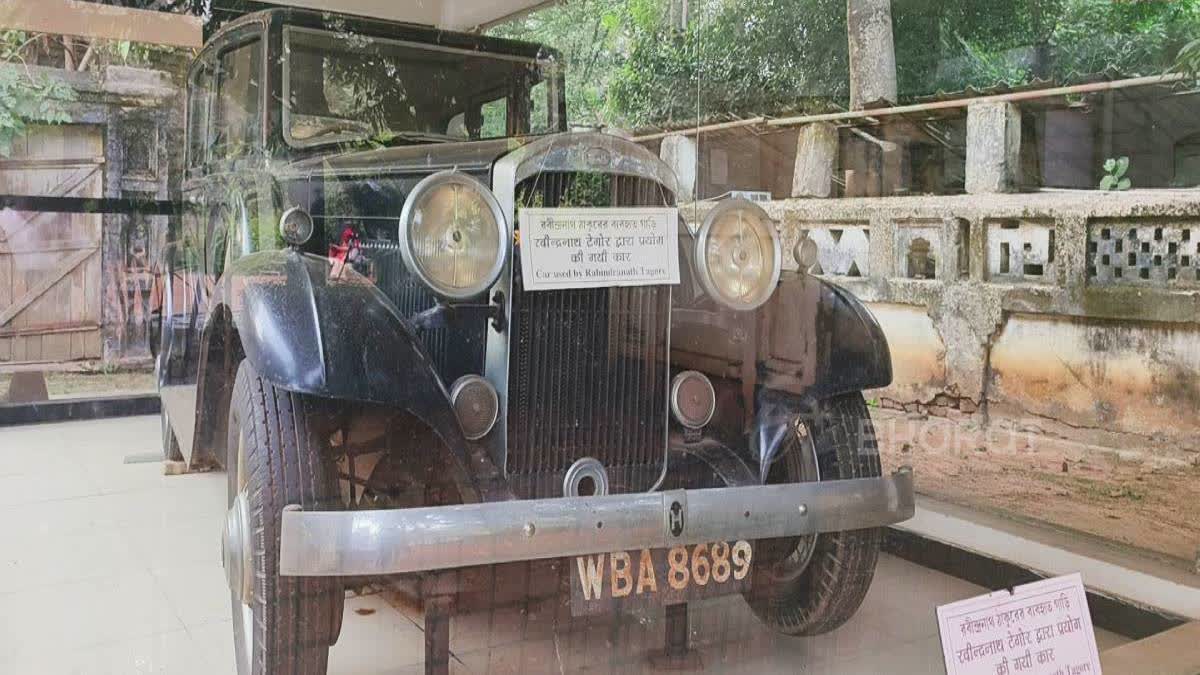Bolpur: WBA 8689 is not the registration number of any ordinary vehicle. The Hamber 1933 is the only model of the British carmaker to be registered in the name of an Asian Nobel Laureate. Guess Who? It's none other than the first Asian to be bestowed the famed award, the author of Geetanjali — The Song Offerings, Rabindranath Tagore.
The interior of the vehicle was decorated with Shital Pati or cool mat by Japanese carpenter Kasahara Kintaro. Currently placed in the Shantiniketan museum, the car was ridden by personalities like Mahatma Gandhi, Subhas Chandra Bose and Jagadish Chandra Bose.
In 1938, two black sedans of the vehicle were bought from a showroom of Roots Limited in Park Street of then Calcutta. One was kept at Tagore's ancestral home in Jorasanko and the other was taken to Shantiniketan in Bolpur of Birbhum district. Tagore used the car, driven by his son Rathindranath, mostly in Shantiniketan where he set up the Visva-Bharati University.
Nilanjan Bandyopadhyay, an official of Rabindra Bhavan in Shantiniketan, and research assistant Shaswati Karmakar gave a detailed description of the historical vehicle.
They said each sedan cost £400 which converts to Rs 5,300 in 1938. So a total of Rs 10,600 was spent on two sedans. The interior was embellished with cool mats for relief from the dry heat of Birbhum.

Tagore visited Japan five times between 1916 and 1929 where he met with Kintaro. Many Japanese traditions and cultures were incorporated into the Shantinikean Ashrama.
Udayan, Tagore's Shantiniketan abode, was covered with cool mats for air-cooling. Likewise, Kantaro used the same material instead of Japanese Tatami mats to cover the car's interior.
The sedan has four seats and an engine cooling system which helped it gain speed quickly. Though the model was stopped in 1931, it resumed in 1933.
Tagore rode the car to attend meditation in the mediation room or events like Magh Mela in adjacent Sriniketan. Pictures of these have been preserved in the museum.
The sedan even ferried Tagore for the last time on July 25, 1941, when he left Shantiniketan for Calcutta. The museum houses that picture too. Apart from Rathindranath, there was a chauffeur.

A few years back, Hindustan Motors tried to repair the car which was futile as spares were out of manufacture. Finally, it was kept as an antique at Rabindra Bhavan.
"There is a plethora of pictures of the car in the archives. The beloved car was the companion of his last journey from Shantiniketan. Standing in front of it, visitors often turn nostalgic," Bandyopadhyay said.
Also Read:



